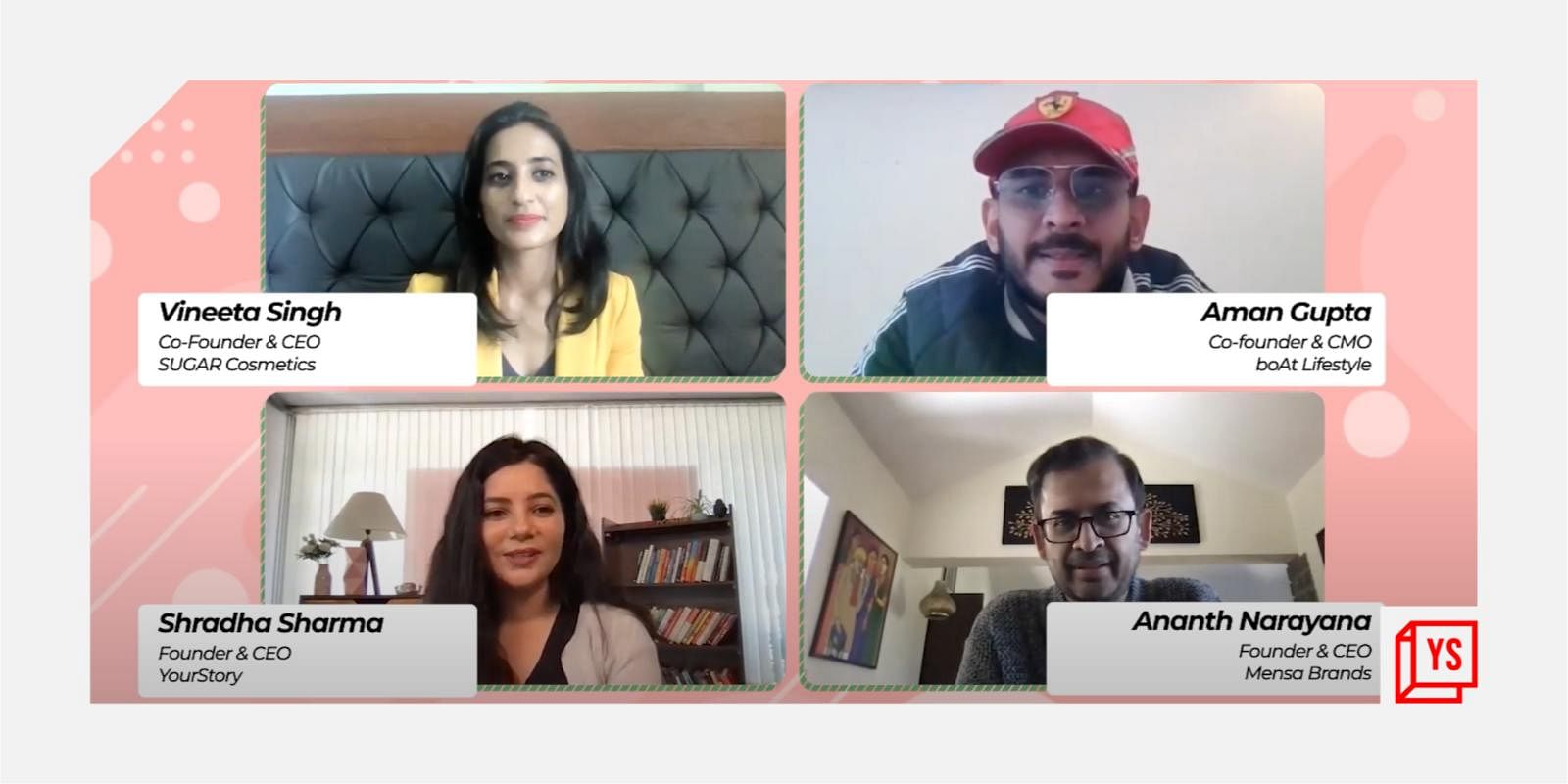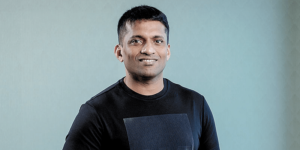Hundred million online shoppers, over 800 direct-to-consumer (D2C) brands worth $45 billion, and a $100 billion market projection by 2025 – India’s D2C revolution is truly here.
From the sector celebrating the birth of its first unicorn, Licious, to homegrown D2C brands like boAT, Mamaearth, Wakefit, SUGAR Cosmetics, and Lenskart, crossing the 100 crore revenue mark, the growth in the Indian D2C space has been swift, buoyed largely by the rapid shift to online with the onset of the pandemic.
Still, today’s ‘steroid-induced D2C growth’ does not afford new-age D2C startups and brands the luxury of time to experiment with products and understand one’s target market – something the founders of venerable D2C names like SUGAR Cosmetics and boAT Lifestyle had in plenty, as did MENSA Brands Founder and CEO Ananth Narayanan in his earlier avatar as CEO of Myntra.
All of this helped these D2C stalwarts define a playbook for building a D2C success story – one that young D2C brands can learn from as they seek to tap $100 billion D2C market opportunity.
“Sometimes what the users tell you when they’re talking to you one on one is very different from what they actually end up spending their money on. So we got the opportunity to figure out what it will take to create that whole experience,” Vineeta Singh, Co-founder and CEO of SUGAR Cosmetics says, as she recalls the early learnings that went into her playbook.
Vineeta was speaking with YourStory Founder and CEO Shradha Sharma during a virtual deep-dive panel discussion that included other D2C experts Aman Gupta, Co-founder and CMO of boAT Lifestyle and Ananth Narayanan of MENSA.
Indeed, top of mind from the trio’s D2C playbook is building a brand that solves a ‘real, hard problem.’
“(D2C brands) have to solve a real problem. Without solving a problem in a unique manner, the medium of how you reach the consumer doesn’t matter. The problem is there is too much capital in the market. Capital sometimes makes you do short term things (where) you fundamentally haven’t built anything and hope that eventually with time and scale, you will get an opportunity to solve the problem. Sometimes it works and you get lucky but 80 percent of the time you don’t. Therefore, you have to solve the real, hard problem first and the capital will follow,” says Ananth of MENSA Brands.
MENSA Brands, which houses over 16 D2C brands and has raised over $300 million in funding, became the fastest Indian startup to turn unicorn in November 2021 after just six months since its inception. 2021 also witnessed the birth of India’s first D2C unicorn when meat brand Licious, in October 2021, entered the club of privately held companies valued at $1 billion or more. Since then, several other D2C brands, including Rebel Foods, MamaEarth, and MyGlamm, among others, have achieved unicorn status, with D2C startups, together, raising more than $2 billion in the year.
“Today the definition of a ‘brand’ has changed to a vast extent. Thanks to Jio, a lot of educational content, and in some ways, (because of) Flipkart, Amazon, Myntra, Nykaa… who have democratised distribution. If you go back 50 years, the Unilever(s) of the world existed because distribution was a moat. I think that’s no longer the case. Today, brands need to have a purpose… and connect to the end consumer,” adds Ananth Narayanan.
Indeed, the number of D2C brands have surged in the recent past, as have the ability of existing brands to create differentiated experiences and scale profitably. Today, the tailwinds for D2C brands are many: over 199 million online shoppers; higher purchasing power; more payment solutions; and an estimated rise in the number of Tier2/Tier 3 shoppers to nearly 300 million in the next five years, according to a Redseer report.
While these changes are significant, delivering a differentiated value proposition, both in terms of the product offerings and the customer experience, will be instrumental for D2C brands to stand out.
According to D2C brand experts Vineeta, Aman, and Ananth, their D2C playbook includes a few common learnings and strategies that every D2C entrepreneur can adopt in their quest to build a top notch brand.
- Product is the key: Traditionally, brands used to think products are commodities and marketing is the ‘real game’. But that has changed as online reviews have made it convenient for potential customers to understand the quality of the products. So today, focusing on the product is key for brands that want to create that wow factor.
“Both the product and the purpose of the product matters. I think that starts to define the brand and demand on what a successful brand will be,” emphasises Ananth.
- Solve for a unique consumer problem and build your own niche: Rather than focusing on creating a ‘me-too-product’, solve a unique consumer problem and be a disruptor in that particular category. Pick a consumer segment in which you’re best positioned to solve a real problem and where you can have a structural advantage.
“I feel if new brands are going to emerge strongly, they will either be on the back of a certain niche which is not yet crowded, or it will be a unique model,” believes Vineeta.
- Innovate or die: Today, it’s imperative that D2C brands focus on ensuring deep innovation in their product offerings and delivering a differentiated customer experience. Brands cannot rely on just following the same principles of many legacy consumer brands, given that the cost of customer acquisition is much higher and competition ever-increasing with the creation of new digital-first brands.
“We have to fight; we have to innovate. I always say that, if you won’t change, the consumer will change you. Marketing is also changing; it is becoming more analytical, so you need to know exactly how to spend, where to spend, and how much to spend. So, times are changing every day. And if you sleep for like one month, you are over for one quarter, you are dead,” quips Aman.
- Solve for education, connect and community: As a D2C brand, it is impossible to build a large brand without solving for education, creating a connect, and building a community.
For example, SUGAR Cosmetics today garners more than 350 million impressions every month, with 10 times more views on its YouTube channel than any other D2C brand – all because its strategy was never to use social media as a performance marketing tool to grow the brand. Instead, the focus was always on educating and connecting with users to build the community, adds Vineeta.
- Building customer loyalty and delivering distinct experiences is paramount: For D2C brands, customer obsession is absolutely critical to creating a differentiated brand experience, add the trio. Ananth emphasises that the moment a brand forgets to focus on customer experience and consumer sentiment, they are dead.
“People are quite unforgiving and reviews last forever. So one just has to be obsessed about it (customer experience). You can’t let it go,” adds Ananth.
No winner takes all
Admittedly, there’s never been a better time for entrepreneurs to build a D2C brand/startup in India.
With over 760 million online users in the country, the D2C opportunity is expected to be much bigger than the ballpark number of $100 billion in the next five years. And experts believe there’s room enough for both small, niche and larger digital-first consumer players to co-exist.
“I think there are more brands that are needed, not less. Plus the authenticity of the brand and the connection to the consumer matters the most. I think India is a very interesting market versus the rest of the world. We’re the only market where actually there’s no winner takes all even on the platform side,” says Ananth, before signing off with a message for entrepreneurs eyeing the burgeoning D2C market opportunity.
“The next 10 years are the best years to build brands. So if you’re an entrepreneur and you have an authentic idea for a problem and you want to solve for a customer, this is the best time to do so.”
(With inputs from Meha Agarwal and Naina Sood)
You can watch videos from all the sessions of Brands of New India Mega Summit here. Don’t forget to tag #BrandsOfNewIndia when you share your experience, learnings, and favourite moments from the event on social media.
For information on future events, collaborations, and information regarding the D2C ecosystem, please visit our website.










